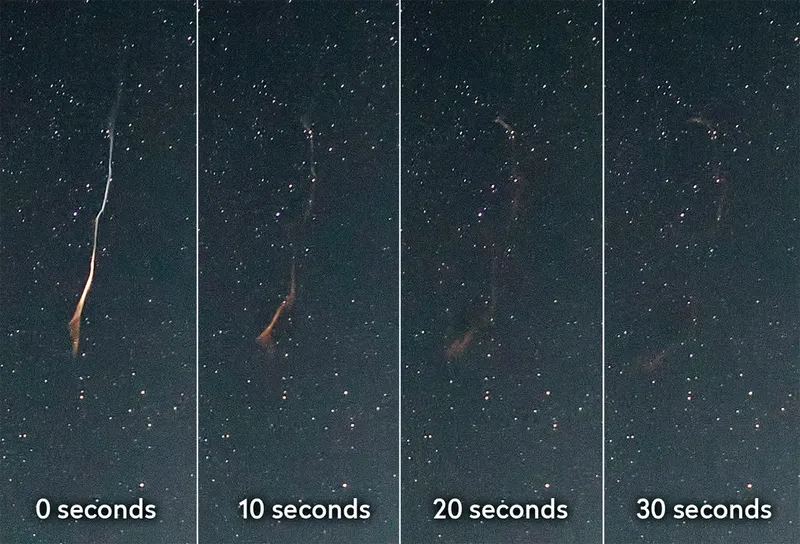A meteor trail is the rapid streak of light caused when a small, typically sand-grain-sized particle vaporises in Earth’s atmosphere.
Many will have seen a meteor trail before, but in this guide we'll show you how to observe and photograph a phenomenon associated with bright trails: a meteor train.
Sometimes the vaporising particle or meteroid is larger than average and produces a brighter trail.
The International Astronomical Union (IAU) defines a meteor brighter than mag. –4 as a fireball, and if you’re lucky enough to catch one of these it’s a sight not quickly forgotten.
Find out when the next meteor shower is visible and how to photograph a meteor shower

Brighter events can also be accompanied by what’s known as a meteor train.
A meteor train arises when the column of ionised gas left behind by a bright trail event is large enough and bright enough to remain visible after the trail has subsided.
Often incorrectly described as a ‘smoke trail’, a meteor train initially appears like a ghostly aircraft vapor trail.
If you see one, the way to record the phenomenon visually is to count for how many seconds it remains visible.
Combined with an accurate assessment of the magnitude of the initial trail, the duration provides excellent data correlating train visibility to trail brightness.
A meteor train fades over time but a persistent one may appear to distort and break up before it disappears.
This is caused by high-altitude atmospheric wind.
Photographing a meteor train

If you’re attempting to photograph meteor trails by taking consecutive exposures during the night, on capturing a bright one look at the following frames very carefully.
If your exposure time is short enough, you might catch the train as it distorts and disperses.
If you are using long exposures, say over 20 seconds, the train’s definition may become blurred as it distorts and detail may be lost.
The best strategy is to use a fast, wide-angle lens, a mid to high ISO and relatively short exposure times.
A high-sensitivity video system is particularly good for this type of capture.
As ever, if you do manage to record any trails or trains, make sure your results are correctly time- and date-stamped to make them useful.
Have you managed to observe or photograph a meteor train? Let us know by emailing contactus@skyatnightmagazine.com
This guide appeared in the December 2023 issue of BBC Sky at Night Magazine
